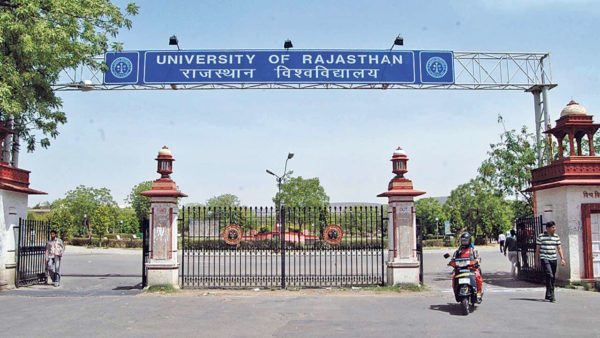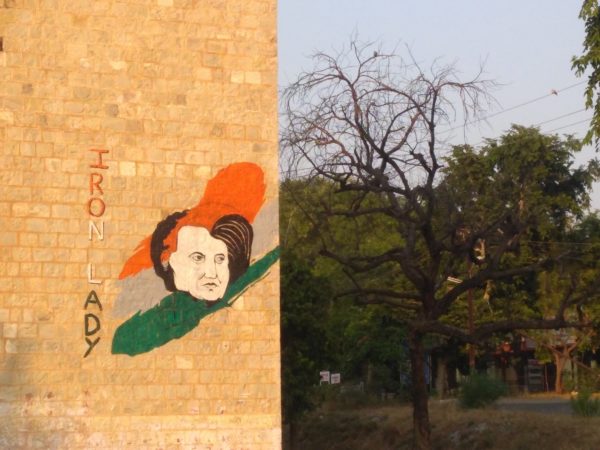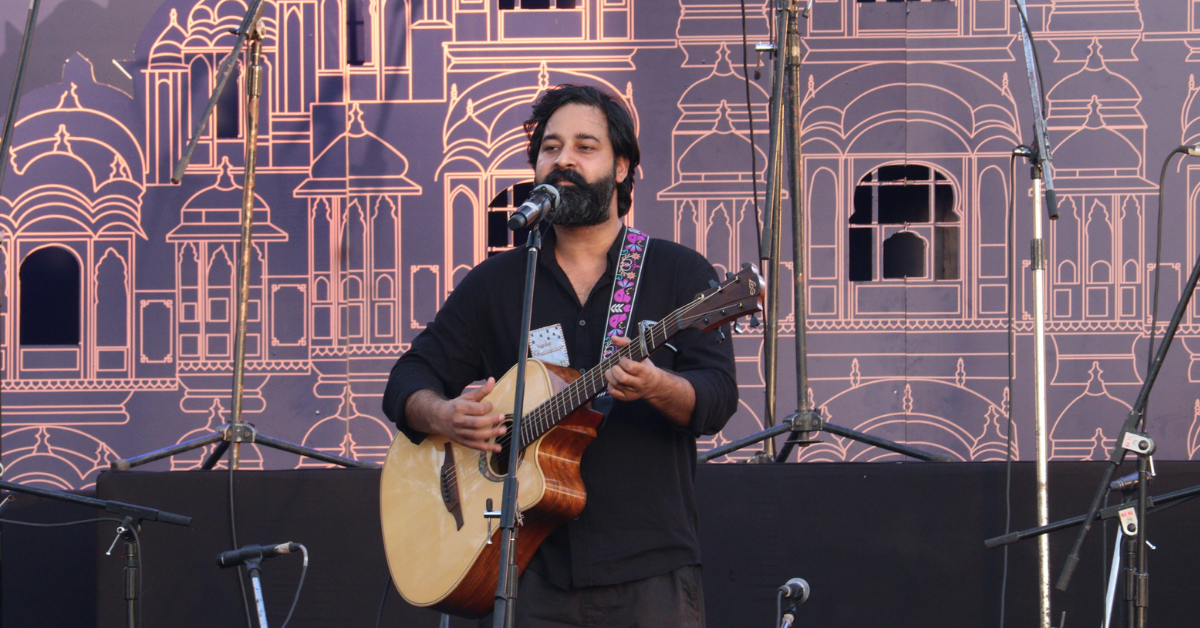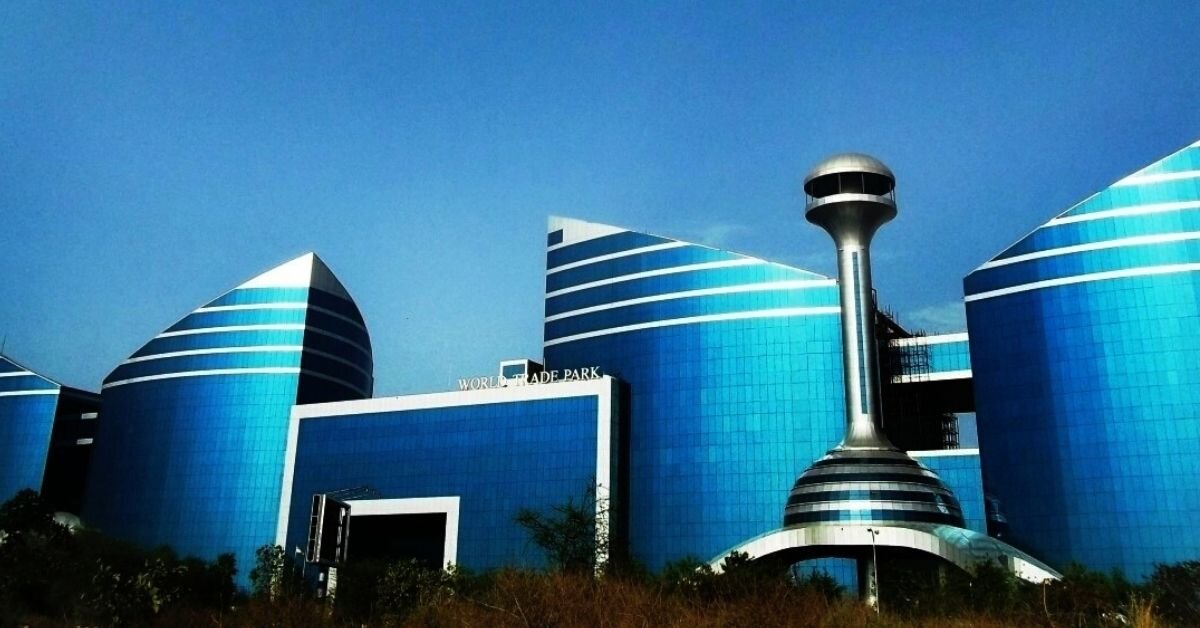On the 75th Foundation Day of Rajasthan University, let us take you through a walk we recently attended at the University.
On a balmy winter afternoon, a diverse group of around 20 folks gathered at the entrance gate of one of the oldest and most prestigious universities of independent India – Rajasthan University. The one thing they had in common was their curiousity to know about the history, ethos, architecture and culture of this University. The occasion was a one-of-its-kind walk organized at the University of Rajasthan by the Jaipur Virasat Foundation as a part of the month-long walk and talk festival – A celebration of Jaipur. Led by Assistant Professor of History at Rajasthan University, Professor Abhimanyu Arha, the walk through the beautiful campus gave a great insight into the history, various departments, library as well as other interesting facets of the University through anecdotes as well as reminiscing of significant historical events and personas.

Taking the participants of the walk back to the birth of the University, Professor Arha shared that the seeds of a pan-Rajasthan university were sown as early as the 1920s. A huge conference was organized by the Agent of the Governor-General in Mount Abu on 20 June, 1924 to take this objective further. However, the struggle for independence slowed down the pace of planning. It was in the 1940s that the issue was taken up again by Sir Mirza Ismail and his successor in office Sir V.T. Krishnamachari. They played a huge role in setting up the University in Jaipur.

Born on January 8, 1947, the University was initially called the University of Rajputana. It was only in 1956 that it was renamed as the University of Rajasthan. The University office was temporarily set up in Kesargarh. Member of the Jaipur Royal Family, Sawai Man Singh II graciously made available to the university an extensive site of over 300 acres. About two miles from the center of the city, the site was considered ideal for a University campus.

The then Principal of Ferguson College, Pune, Dr. G. S. Mahajani, was appointed as the first Vice-Chancellor of the University. Mr. MM Verma was appointed as the first Registrar and he worked closely with Dr. Mahajani. The University was granted an annual grant of Rs. 2.5 lacs by the participating states of Rajputana. However, it is worth noting that it was made clear by the states the acceptance of the grant in no way detracted the autonomy of the University or its freedom to organize its teaching and administration.

Reminiscing some fascinating events from the past, Professor Arha threw light on the historical significance of the Rajasthan University campus as well. The first session of the Indian National Congress post-independence as well as post the assassination of Mahatma Gandhi was held in the Rajasthan University on December 18, 1948. He further shared that the Central Library, which started with 1500 books, today has as many as 4 Lakh titles including many rare books from the colonial times as well. A set of rare archives – ‘Mount Abu Records’ – too is housed in the Library of the Rajasthan University.

The foundation stone of the University Campus was laid by Shri C. Rajagopalachari on February 20, 1949. Professor Arha spoke in length about the able leadership, vision and foresight of the first three Vice-Chancellors of the University — Dr. G.S. Mahajani, Dr. G.C. Chatterji and Dr. Mohan Sinha Mehta. They played a crucial role in the development of the University, its campus, recruitment of faculty, among others. It was because of their hard work and efforts that the University was revered by the learned section of the society. They brought in different faculties, some of the finest scholars who after having served in the Rajasthan University for many years took up high positions at nationally renowned universities. Some of them include — Professor M. V. Mathur, Professor G. C. Pandey, Professor P. N. Srivastava, Professor R. C. Mehrotra, Professor Satish Chandra.
Based on his vast experience and visit to several renowned universities across the globe, Professor Arha recalled that there is hardly any University in the world that has a stunning fort overlooking it. The magnificent Moti Dungri fort coupled with the last of the setting sun was truly a sight to behold from the university campus. It was an apt conclusion for an enriching walk that made history by being the first-of-its-kind in the recent past.

The month-long series of walks and talks organized by the Jaipur Virasat Foundation was a great way to rediscover the Pink City as well as take a break from the monotonous routine owing to the Pandemic. It was compulsory for all the participants to wear masks and adequate social distancing was maintained as well.
Tusharika Singh
Latest posts by Tusharika Singh (see all)
- Music experiences in the Pink City - January 11, 2025
- Jaipur Literature Festival 2025 Announces First List of Speakers for Landmark 18th Edition - December 3, 2024
- From Rejection to Recognition: Jaipur’s Abhishek Mudgal joins NSD as stage manager - December 2, 2024









